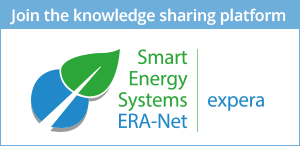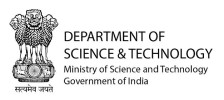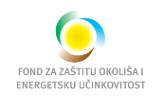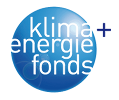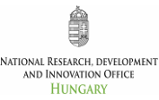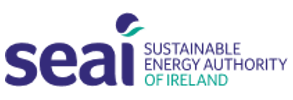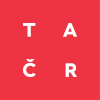CHALLENGES AND OBJECTIVES
What Are the Key Challenges That ERA-Net Smart Energy Systems Will Meet?
The European Strategic Energy Technology Plan (SET-Plan) is the technology pillar of the European Energy Union. ERA-Net SES is committed to substantially contribute to the implementation of SET-Plan Action 4: Increase the resilience and security of the energy system.
In the SET-Plan Action 4 Implementation Plan, the following flagship initiatives have been formulated (SET-Plan Action 4 Implementation Plan, 15th January 2018):
SET-Plan Action 4 Flagship Initiative 1:
Develop an Optimised European Power
enabling the appropriate level of reliability, resilience and economic efficiency, while integrating variable renewables, such as wind and solar generation by providing increased flexibility thanks to innovative technologies enhancing customer participation, integrating better storage, making the best use of connections with other networks (e.g. heat and cold, transport) and optimising the use of flexible sustainable combined power and heat generation.
Develop an Optimised European Power
enabling the appropriate level of reliability, resilience and economic efficiency, while integrating variable renewables, such as wind and solar generation by providing increased flexibility thanks to innovative technologies enhancing customer participation, integrating better storage, making the best use of connections with other networks (e.g. heat and cold, transport) and optimising the use of flexible sustainable combined power and heat generation.
SET-Plan Action 4 Flagship Initiative 2:
Develop Integrated Local and Regional Energy Systems
that make it possible to efficiently provide, host and utilise high shares of renewables, up to and beyond 100% in the local or regional supply by 2030, enabling regions and local communities to realise their high sustainable energy ambitions. They shall provide tailor-made solutions that meet the local and regional requirements and demand. At the same time they shall link to a secure and resilient European energy system, enabling the participation in inter-regional exchange of energy as well as in sharing responsibility to maintain the overall system, considering a sustainable use of local and global resources.
Develop Integrated Local and Regional Energy Systems
that make it possible to efficiently provide, host and utilise high shares of renewables, up to and beyond 100% in the local or regional supply by 2030, enabling regions and local communities to realise their high sustainable energy ambitions. They shall provide tailor-made solutions that meet the local and regional requirements and demand. At the same time they shall link to a secure and resilient European energy system, enabling the participation in inter-regional exchange of energy as well as in sharing responsibility to maintain the overall system, considering a sustainable use of local and global resources.
In the Stakeholder Declaration for the SET-Plan Action 4 on Energy Systems, endorsed by member states representatives in the SET-Plan Steering Group as well as by a large number of European industry associations, represented in the European Technology and Innovation Platform on Smart Networks for the Energy Transition (ETIP SNET), and other ETIPs, the following overarching innovation goals have been identified and will be considered in ERA-Net Smart Energy Systems:
- Integrated local and regional energy systems shall be developed, in order to improve accessibility of various infrastructures, integration of new technologies and players in end-use, system operation, generation and conversion, storage, mobility, smart services, etc.
- Increasing the flexibility of the energy system in order to fulfil the requirements for system operation as well as from different user-groups (end-users, retail, generation, local storage) with a particular focus on the optimised integration of energy from local renewable sources
- Optimise Energy Systems focussing on minimising the consumption of non-renewable resources, high efficiency, optimal use of new and existing energy and ICT infrastructure
- Maintain and improve the resilience of the energy system, considering safety, security and privacy aspects as integral to design parameters
- Enabling the development of new and smart energy services for the dynamic management of the energy systems and to empower end-users by increasing connectivity and data accessibility
- Enabling communities and regions to be active players in taking responsibility for their sustainable energy supply, including solutions that allow for high shares of renewables up to and beyond 100% in the regional supply, and allow for participation in inter-regional exchange of energy as well as in sharing of responsibility to maintain the overall System
(In the proposal for the Internal Electricity Market, a specific role is given to "Energy Communities1”. Not the least, the EC Winter Package calls for "regional operational centres” and recognises the potential of regional approaches, when it calls for "methodologies to assess security of supply and to identify crisis scenarios in the Member States and on a regional level, to conduct short-term adequacy assessments, to establish risk preparedness plans and to manage crisis situations.”)
(Refined innovation targets have been formulated in the SET-Plan Action 4 Implementation Plan).
1Page 52: " 'local energy community' means: an association, a cooperative, a partnership, a non-profit organization or other legal entity which is effectively controlled by local shareholders or members […]”
Page 32: "[…] community energy offers an inclusive option for all consumers to have a direct stake in producing, consuming and or sharing energy between each other within a geographically confined community network […]"
Which Major Long-Term Impacts Can Be Expected With Support of ERA-Net Smart Energy Systems?
- Completion of the strong cooperation in Smart Energy Systems and Networks development on the Pan-European level in the SET-Plan Initiatives, covering all levels: regional, national, transnational and European
- Acceleration of shared Smart Energy Systems development and implementation in Europe by linking multiple governance levels as well as by much deeper knowledge exchange within and between transnational projects, thus strengthening Europe’s competitiveness in global markets
- Efficiency of the transition process by furthering the broad implementation of interoperable best practise solutions based on common knowledge and understanding.
- Strengthening of the path from electricity systems only towards holistic energy systems by considering cross energy carrier synergies as well as the integration of different infrastructures and sectors.
- Convergence of the development by accelerating the establishment of common standards as well as by creating transnational synergies, paving the way for critical masses for marketable solutions.
- Opening and harmonising of marketplaces that allow for seamless access of (new) market players both in the energy domain and its supply industry (including SMEs and crafts), thereby contributing to substantial progress in growth and creation of jobs in Europe
- Increasing confidence of policy makers, regulators and utilities in the security and cost effectiveness of new solutions for energy supply that rely on distributed, renewable energy sources and a new market design, providing the right signals to enterprises and investors.
What Are the Intentions for the Members to Participate in the Initiative?
By networking with funding partners from other countries, the members of the initiative want to
- expand the existing network of national/regional funding agencies by substantially increased transnational funding, thereby strengthening cooperation on a European level
- coordinate national and regional RDD budgets of more than 100 Mio € according to the implementation of the relevant European RDD agendas
- enable the sharing of already existing, national and regional key demo project knowledge and results and step-up the related funds already invested in Smart Energy Systems development
- organise horizontal and vertical learning bottom-up from the regional and national level towards the European level, in order to share best practise, develop planning tools and governance guidance increasing confidence to demonstrate and exploit new solutions and business opportunities
- Initiate co-creation processes on a programme level together with associated partners from the regional and local innovation and business communities in order to align the R&I knowledge relating to technology and system aspects with new innovation approaches from start-ups and local and regional stakeholders in societal and business domains
What Is the Ambition of the Initiative?
ERA-Net SES follows an integrated, interdisciplinary three layer research model and supports RDD activities that cover multiple layers:
- Technology: cross energy carrier solutions, grid automation, telecommunications, machine learning, technological research etc.
- Market: market design with news goods and services, business models, regulatory framework, economic research, etc.
- Adoption: innovation and transition processes with stakeholders, consumer acceptance, education, policy, retail, community and society, social research, etc.
With the focus initiative on integrated regional energy systems (RegSys) the initiative broadens the scope from smart electricity grids to smart energy systems, encompassing regional and cross-sectoral integration in three dimensions:
- Smart Energy System Integration: optimise the integration of renewable energy and provide technology service systems that support highly dynamic business processes with a large number of participants such as individual consumers and prosumers or customer groups as well as system operators, facility managers, energy suppliers, service providers and aggregators
- Innovation Ecosystem Integration: better understand local and regional processes and open implementation paths beyond traditional RDI together with local energy and service companies, infrastructure operators, local and regional governments and public authorities, as well as SMEs, start-ups and crafts
- Cross Sectoral Integration: on a local or regional level, link smart energy activities with transport, industry and trade, municipal infrastructure or agriculture
ERA-Net SES is seeking to support proposals that
- identify the critical needs and involve the most significant need-owners in local and regional energy systems
- involve technology and service providers, innovators and researchers to develop and define tailor-made solutions for local and regional energy systems that meet the demand of the need owners
- engage private and public stakeholders in co-creation processes to accelerate the innovation and implementation of new Solutions.
Which Methods Does the ERA-Net Smart Energy Systems Initiative Use?
Utilising national funding programs and with the support of the European Commission, the initiative can build an eco-system of excellence for energy systems by
- funding transnational projects that involve participants from different countries of the ERA-Net SES members
- co-creating on a programme level, developing best practise cooperation formats for supply and demand side-oriented innovation strategies, involving intermediaries to regional and local innovation stakeholders, business and SME networks and need owners, beyond that also involving intermediaries to additional support structures that can support market uptake measures as well as involving incubators for start-ups or networks of ICT tool providers.
- building a knowledge community of experts to support horizontal learning among Smart Grids RDD projects on the regional/national and transnational level and vertical learning between these projects and the programming on national and European level
- issuing policy briefs with recommendations stemming from projects and the ERA-Net SES Knowledge Community
- liaising and cooperating with other European and worldwide initiatives (e.g. ETIP SNET, Horizon 2020 Bridge, EERA, EASE, KIK InnoEner, Mission Innovation, ISGAN)
- participating in the Horizon 2020 open data pilot: the initiative will follow the overarching EU innovation policy goals. In addition, the awarded projects will also follow the principles of open data.
What Are Operational Goals of the Initiative?
- pool funding from more than 25 involved funding partners
- launch yearly joint calls for RDI proposals, referring to the ERA-Net SES focus initiatives, focusing on specific topics and cross-cutting issues
- organise matchmaking and information events for applicants
- provide funding, guidance and advise via the more than 25 involved national agencies and funding partners
- organise a high standard independent project selection process
- maintain a knowledge community with above 500 members contributing to Smart Grids development, scaling-up and replication on a European level, organising workshops, work on living documents, publish policy briefs, planning tools and governance guidance
- organise co-creation events together with associated Partners
- provide a sustainable coordination structure, ensuring the efficient collaboration of funding partners, a high service level for agencies and applicants, sound mechanisms for project monitoring and follow up as well as for dissemination of results
- co-organise the National Stakeholder Coordination Group on Smart Networks for the energy transition, together with ETIP-SNET and the European Commission
What Are the Experiences That ERA-Net SES Can Build On?
ERA-Net SES can build on a long track record of Smart Grid and Smart Energy research activities and development initiatives. It started in 2009 as ERA-Net Smart Grids, evolved into ERA-Net Smart Grids Plus in 2014 and finally into ERA-Net SES in 2018. Since 2010 the initiative has launched 6 joint calls for proposals with an overall budget of about 80 M€. In the past years since 2015 the initiative has built a solid basis for its future development:
- Until 2016 the European Electricity Grids Initiative (EEGI) had successfully taken a leading role in developing European scale smart grid solutions, by bringing together key stakeholders and achieving critical mass. ERA-Net SG+ expanded this European industry initiative by enhancing synergies between national Smart Grids programs and creating a coherent collaboration network that can further serve the Smart Grids European Research Area Network and beyond.
- Since 2017 ERA-Net SES is closely cooperating with the new European Technology and Innovation Platform on Smart Networks for the Energy Transition, as well as with the European member states led SET-Plan Working Group on SET-Plan Action 4- Increase the resilience and security of the energy system.
- ERA-Net SES can build on existing national and regional key pilots, demo projects and facilities as well as the related investments by industry and the public (>2.500 Mio EUR). It leverages on these results by facilitating deep knowledge sharing in transnational research, development and innovation projects - taking the next step while building on the existing demos.
- Many EU-funded projects have laid ground for future research, development and innovation. Existing projects cooperate in BRIDGE, a European Commission initiative which unites Horizon 2020 Smart Grid and Energy Storage Projects to create a structured view of cross-cutting issues which are encountered in the demonstration projects and may constitute an obstacle to innovation.
